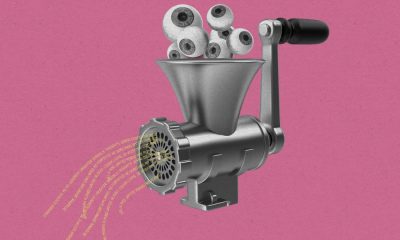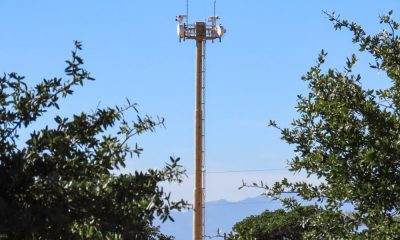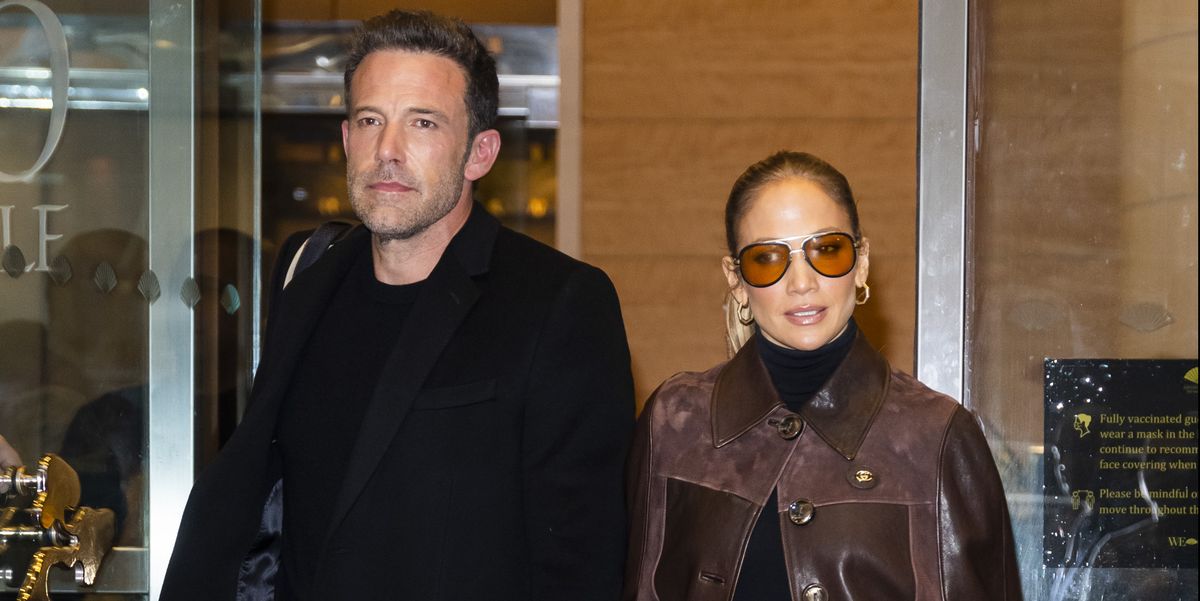Fashion
How to Invest Your Money For Good
Published
3 years agoon
By
Terry Power
Before my aunt died of cancer last fall she became fanatically philanthropic. She asked for donations to NARAL instead of flowers at her memorial, and spent her last few weeks—when she was still strong enough to force my mom to put her on FaceTime with everyone she knew—giving away money to people who had touched her: the neighbor who always brought in the trash cans, the guy at the local deli who had catered her birthday once.
So when the bulk of her remaining inheritance went to my brother, my cousin, and me—all of us members of the generation that’s slowly accruing wealth from boomers—I felt a combination of luck, pressure, and guilt from a windfall I wasn’t expecting and hadn’t earned.
But I was nervous about what to do with that windfall. I had a vague socially-enforced idea that growing up and being financially responsible meant using your money to make more money. That investing was the good and smart thing to do. And that if kids were making money off of GameStop, I could probably figure out how to do it, too. But just throwing dollars at whatever was most profitable didn’t feel quite right. Given the immense privilege of generational wealth, I wondered, could I invest it for good? For me, and for my aunt’s memory.
As I started to try to figure that out, two things felt daunting. First, the confusion and fear of losing money or getting screwed that feels baked into the veiled, jargony world of investing. “It can be hard to have context on what’s happening out of your control, which can come with a lot of self judgement and shame,” wealth coach Leah Davis told me. Second, I was nervous about the questionable ethics of the financial industry as a whole, and the stock market in particular, which makes money without any sense of morality or value system beyond getting richer. I don’t want to miss a chance to build wealth for my future, but I also don’t want to be complicit in a system that seems to be shoveling the bulk of its power to rich white dudes on Wall Street and their bros in the fossil fuel industry or at big tech companies.
It turns out I’m not the only one thinking about this. Investing in line with your values—which you might see called impact, sustainable, ethical, socially-responsible, or ESG (environmental, social governance) investing—is one of the fastest growing segments of the market. It means that investors invest in places like Fidelity Women’s Leadership Fund, a mutual fund made up on women-led businesses, and avoid ones like weapons manufacturer Smith and Wesson. In 2020, socially responsible investing accounted for about one-third of U.S. asset management, and it’s particularly popular among younger investors and women. “Our generation is saying, ‘We want our dollars to create the future we want to live in,’” says Catherine Berman, the CEO of CNote, a women-led impact investment platform.
That sounds great in theory, but in practice it’s blurred by jargon and fuzzy targets. There’s no industry standard for what counts as ethical or responsible, so the onus is on the investor to make sure they’re not funding organizations that don’t align with their goals. And like Davis says, that feels scary when you’re on the outside and don’t speak the language.
“Our generation is saying, ‘We want our dollars to create the future we want to live in.’”
I wanted to know how I could legitimately filter for my lofty goal of getting rich, while saving the planet. The obvious first stop in figuring that out was Steve, my aunt’s financial advisor, a nice, old-school manager, with an unfortunate Eric Trump countenance.
Over Zoom, I tried to express how I wanted to invest. For me, curbing carbon feels crucial to maintaining civilization, so I told him that I only wanted to fund companies that were doing good, environmentally. He was dismissive in the face of my desires, “When you get down to it, no company is totally green,” he told me. “Some of them are doing well, but they’re not really making money as a whole.” He told me my best bet for investing was to follow index funds—a group of stocks built to track a financial market index, like the S&P 500, because they tended to safely appreciate over time.
I left the Zoom drained. Was he right to be that skeptical? Was I being an idealistic baby to think that my little pot of money could be a lever in a broken system?
Turns out, Steve’s a cynic, and a reductive one at that. Yes, there is abundant greenwashing in the financial sector and when I started to search green funds and green investing, drilling into funds into that claimed to be ESG focused, like the 1919 socially responsive balanced fund (the top of the list when I Googled), many of them were made up of stocks like Amazon and Microsoft—whose business practices are not exactly sustainable—and I had to dig into the reports of their holdings to find what the funds were comprised of.
But plenty of companies, from home good manufacturers to utilities that aren’t alleging false principles are doing well, and that cadre is growing. According to an April report from the International Energy Agency and Imperial College London, investments in renewable energy have seen a 367% greater return than fossil fuels since 2010. And according to Morningstar, so-called sustainable funds are outperforming comparable traditional funds. But it felt hard to fight through the opacity of which companies actually provided social or environmental good. So to try to narrow down to truly environmentally sustainable stocks, I called Annie Seelaus, the CEO of mission-driven asset management firm R. Seelaus and Co. to see if she could help me decide where to put my money.
Seelaus says that the world of impact investing is rapidly becoming more transparent because companies are being clearer about their values, thanks to pressure from consumers and stockholders, and the industry is realizing that a growing number of investors won’t put money into companies and organizations they don’t believe in morally. She advised me to look at traditional investing with an impact lens and set parameters. For instance, one of her goals is to invest in companies that prioritize gender diversity, so when she looks at potential businesses to buy stock in, she looks at their board and leadership to make sure they have women at the top. “That’s just one metric of gender diversity, but it’s a place to start,” Seelaus explains. She also says there are some investing platforms, like Betterment, that will let you sort for sustainable, or ethically managed stocks. I started by digging into renewable energy, which is currently the fastest growing sector of the energy economy, and is primed for an upswing thanks to the president’s infrastructure plan.
I wanted to know how I could legitimately filter for my lofty goal of getting rich, while saving the planet.
If picking individual stocks feels too risky or time consuming, Seelaus says that mutual funds can be easier for investors, because those funds aggregate and monitor stocks for you, but you do have to do initial research about how they pick investments and define their values. She told me that there are two ways that funds tend to structure their ESG investments. Exclusionary investing, where they don’t spend money on things like guns, or tobacco, and eliminate any of those from your fund. And inclusionary or impact investing, where they only bring in positive things, like renewable energy or funds related to water, for instance. She told me to use that ideas as a guideline for looking at funds, because it immediately helps narrow down your options. I decided I only wanted to consider funds that were inclusionary, just excluding, say, gas companies, didn’t feel like a strong enough stance.
Davis says you don’t have to have all the answers, especially if you’re newly diving in. “If that feels like a lot, remember that you don’t have to do it on your own,” she says. “Take it seriously, meet with a professional and don’t be embarrassed.”
But even when I talked to professionals like her, I still felt intimidated by and uncomfortable with large publicly traded companies, so I wanted to see if there were other avenues. I soon learned the stock market isn’t the only place to put your money. There is a growing number of direct-lending organizations that will help you find places where you can give loans to small businesses, and then receive returns through investment. That’s a big part of what CNote’s Berman does. Her organization finds small businesses and organizations that need funding, and essentially crowdfunds their loans. The idea was to be the bridge between potential investors and companies or groups that have traditionally struggled to get funding form big banks. She says the space is growing fast, especially because online platforms make it easy, and other organizations like Kiva or Lending Club are doing similar work. “You can take a small amount of money, invest in, say, black women entrepreneurs or housing unit for families in a low income community in a way that is low-risk and proven, and makes money back with interests,” Berman says.
That sounded pretty appealing to me, and once I started to understand where I could put my money, I began to think about how to make sure it continued to be impactful. Seelaus says that when you do invest, you shouldn’t be scared to directly contact the company directly. That’s part of the contract of investing: when you buy in, you have a voice, and the company is beholden to hear your concerns. “Through the lifecycle of the investment you want to know: what’s the measurement of accountability and how do you have a baseline?” she says. “There’s not just one answer, but if you are an investor it’s important to ask: ‘What are their reporting requirements and how do I get the data?’ And you should feel empowered to ask those questions. The investors themselves hold the companies accountable.”
In the end, I found some companies that I feel good about supporting, putting my money into renewable energy, recycling (trash is profitable right now, who knew?!), and organic foods. I also decided to listen to Steve a little, and invested in a few environmentally conscious index funds, to take some of the daily pressure off my shoulders. I also invested some of my money into CNotes’ fund that supports small women-owned businesses, which I think my aunt would have appreciated. The return may be small, but I like the thought behind it. I did the research, I diversified and now the goal is to pay attention—to use my wallet and my voice to point toward a future that looks good to me. It still feels a little scary, but I know I can keep tweaking, if those avenues don’t feel good after a while. After all, as Berman says, “Your savings account is a vehicle for change.” And that change doesn’t happen if we don’t make it happen, and keep making it happen, one dollar at a time.
Heather Hansman is a Seattle-based freelancer and columnist at Outside magazine where she writes about environmental issues.
This content is created and maintained by a third party, and imported onto this page to help users provide their email addresses. You may be able to find more information about this and similar content at piano.io
You may like
-


Good governance essential for enterprises deploying AI
-


Junk websites filled with AI-generated text are pulling in money from programmatic ads
-


Is Sparkling Water Really Good For Health? Here’s What Experts Think
-


How Good Posture Eliminates Postural Discomfort and Relieves Self-Confidence
-


Good News For People With Chronic Back Pain – New Treatment Could Offer ‘Dramatic’ Relief
-


The US is pouring money into surveillance tech at the southern border
Fashion
Jennifer Lopez Joined Ben Affleck In L.A. With Kids For Thanksgiving
Published
3 years agoon
26 November 2021By
Terry Power
On Wednesday night, Jennifer Lopez arrived in Los Angeles with her 13-year-old twins Max and Emme. The family was likely there to join Lopez’s boyfriend, Ben Affleck, for the Thanksgiving holiday. Lopez recently returned from the much colder climate of British Columbia, Canada, where she was filming her latest project, The Mother.
J. Lo touched down in her private jet wearing a teddy fur coat from Coach’s Autumn/Winter 2019 collection, and a pair of Ugg boots. Classic airplane outfit, celebrity style. Lopez and Affleck originally dated in 2002 and broke up in 2004. Their romance was rekindled earlier this year, soon after Lopez ended her relationship with baseball player Alex Rodriguez. The new couple went official in July, while celebrating Lopez’s 52nd birthday abroad.
Affleck’s most recent relationship with Ana de Armas ended in January after about a year together. He had divorced ex-wife Jennifer Garner in 2015 after being married for almost a decade. Garner and Affleck had three daughters, Violet, Seraphina, and Sam.
Before traveling back to the U.S., Lopez posted a story to Instagram Reels about how grateful she was to be headed home.
“Hey everybody, it’s my last day here shooting on The Mother out in Smithers in the snow, it’s been beautiful, but tonight I’m on my way home,” she said, as she walked through the wild landscape in a black coat and beanie.
“I’m so excited for Thanksgiving! I hope everybody has an amazing weekend with their families and their loved ones, there’s so much to be grateful for this year. I’m on my way!”
This is the first major holiday of the year since Lopez and Affleck reunited, so it’s likely to be a big one for both families.
This content is created and maintained by a third party, and imported onto this page to help users provide their email addresses. You may be able to find more information about this and similar content at piano.io
Fashion
Everlane’s Black Friday Sale is Packed With Winter Essentials
Published
3 years agoon
26 November 2021By
Terry Power
Courtesy
This is not a drill: Everlane just kicked off its Black Friday sale. Now through Monday, November 29, the direct-to-consumer brand is offering 20 to 40% off its cozy sweaters, minimalist activewear, and popular jeans. If you’re not super familiar with Everlane, let me spell it out for you: this is a big deal.
The e-tailer might be known for making sustainable, ethically made clothes and accessories at a fair, affordable price, but Everlane rarely has sales beyond its Choose What You Pay section. So, if you want to stock up on cute basics for less, now’s your time to shop.
And, in true Everlane fashion, the brand is taking this opportunity to give back. Everlane is partnering with Rodale Institute and help U.S. farmers transition their farmland to regenerative organic—and donating $15 per order to the cause. A great sale that gives back? I’m sold.
But, hurry! These deals are going to sell out fast, so you won’t want to waste any time filling your e-cart.
Advertisement – Continue Reading Below
1
The Cloud Turtleneck
$150 $105 (30% off)
Sweater weather is officially here, so why not pick up a few fresh layers? This turtleneck is the S’s: snuggly, stylish, and on sale.
2
The Authentic Stretch High-Rise Skinny Jeans
everlane
$78 $58 (25% off)
Looking for a great pair of jeans, minus the markup? Everlane’s classic skinny style is not only super stretchy, but it’ll look good with everything from chunky sweaters to silky blouses.
3
The ReNew Teddy Slippers
everlane
$65 $39 (40% off)
Why limit the shearling trend to the upper half of your body? These plush slippers will give even your most worn-in sweats a stylish edge.
4
The Chunky Cardigan
everlane
$110 $77 (30% off)
Sure, this may not be the cardigan Taylor Swift was talking about. But, with an exaggerated collar and ribbed finish, this style would definitely score top marks from the singer herself.
5
The Canvas Utility Boots
everlane
$115 $59 (40% off)
Brave the cold weather in style with Everlane’s chic boots. The canvas uppers and thick sole make these an ideal, all-weather option.
6
The Lofty-Knit Henley
everlane
$150 $105 (30% off)
Made with a nubby blend of merino wool, alpaca, and recycled nylon, this henley is perfect for a cozy night in, yet stylish enough to wear in public.
7
The Perform Bike Shorts
everlane
$45 $22 (51% off)
No, you can never have too many stretchy pants. Everlane’s bike shorts ooze major Lady Di vibes — for under $25, no less.
8
The ReLeather Court Sneakers
everlane
$110 $66 (40% off)
Made with recycled leather, these refresh sneakers will serve up major curb appeal — and Mother Nature’s seal of approval.
9
The Field Dress
everlane
$100 $60 (40% off)
Found: a fun, flouncy frock you can wear year-round. For a wintry take, pair with opaque tights and your favorite chunky boots.
10
The Cozy-Stretch Wide-Leg Sweatpants
everlane
$150 $75 (50% off)
With a straight-legged silhouette and wool material, it’s safe to say these are the chicest sweatpants we’ve ever seen. To sweeten an already enticing offer, this pair is half off.
11
The Organic Cotton Flannel Popover
$80 $56 (30% off)
Everlane reimagined the traditional flannel with a cropped silhouette, voluminous sleeves, and a slew of minimalist colors.
12
The Studio Bag
everlane
$275 $192 (30% off)
Large enough to fit all your essentials, but not too big that it’ll weigh you down, Everlane’s Studio Bag is the perfect everyday purse.
13
The ReNew Long Liner
everlane
$158 $118 (25% off)
House Stark was right: winter really is coming. Made with recycled materials, this liner is a great layering piece that’s considerably chicer than the yesteryear’s Michelin Man-worthy parkas.
14
The Felted Merino Beanie
everlane
$50 $30 (40% off)
All set on clothes? Pick up this cheery beanie, which is 40% off its original price.
Kelsey Mulvey is a freelance lifestyle journalist, who covers shopping and deals for Marie Claire, Women’s Health, and Men’s Health, among others.
This content is created and maintained by a third party, and imported onto this page to help users provide their email addresses. You may be able to find more information about this and similar content at piano.io
Advertisement – Continue Reading Below
Fashion
29 Winter Fragrances That Exude Main Character Energy
Published
3 years agoon
26 November 2021By
Terry Power
29 Winter Fragrances That Exude Main Character Energy
